How Artist Mustafa Hulusi Finds Hope in the Decay of Fruit (and Culture)
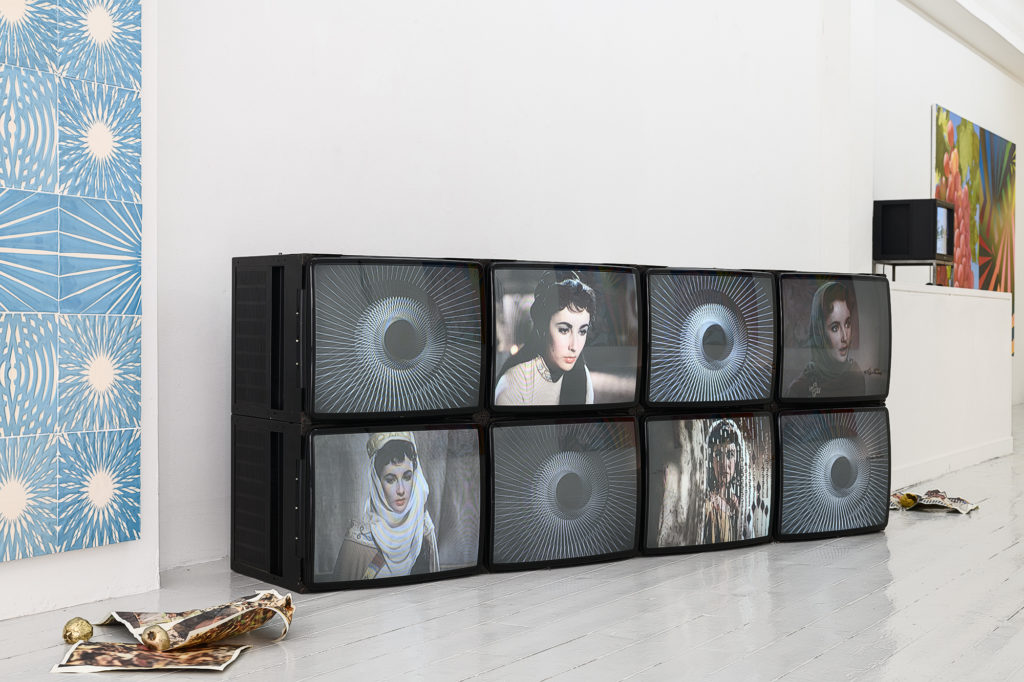

Katie White

There is a passage in Aldous Huxley’s 1956 essay “Heaven and Hell” in which he recalls a moment of personal transcendence. The author writes: “The firelight touches and transfigures her face, and we see, concretely illustrated, the impossible paradox and supreme truth—that perception is (or at least can be, ought to be) the same as Revelation, that Reality shines out of every appearance, that the One is totally, infinitely present in all particulars.”
For Huxley, art, design, and psychoactive drugs were different avenues to the realization of the cosmic unity between all things. “Mustafa Hulusi: Cyprus Realism,” a new exhibition at Pi Artworks in London, suggests the opposite: that discontinuity is the shared underlying truth of contemporary existence.
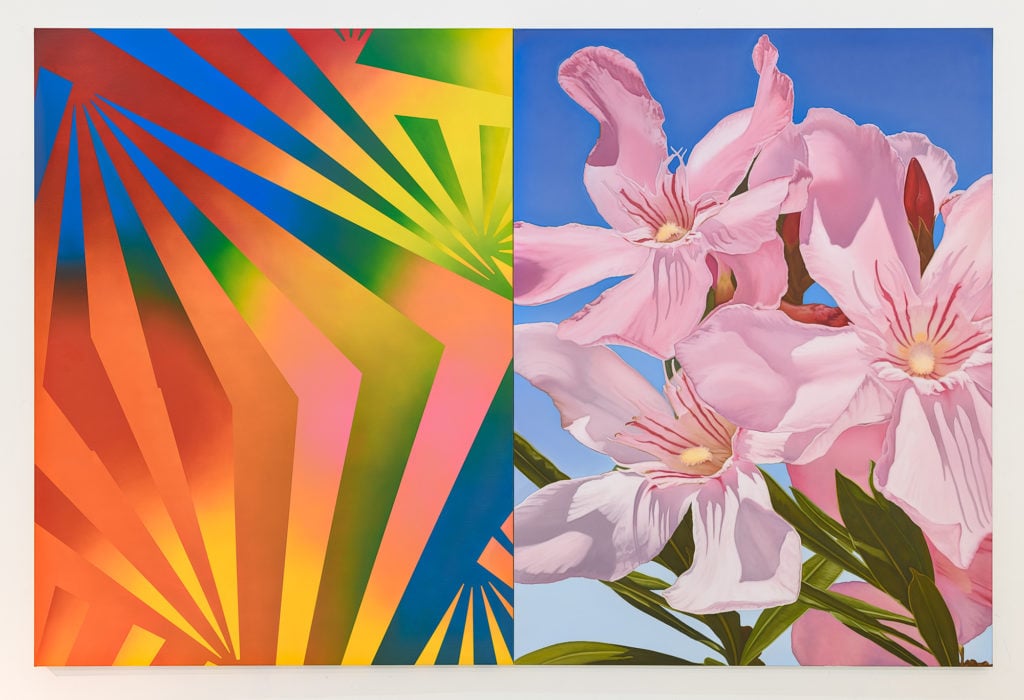
Mustafa Hulusi, Cyprus Realism (Oleander 1) M (2019). Courtesy of the artist and Pi Artworks.
The exhibition, which encompasses painting, sculpture, film, and photographs, centers on the tensions between abstraction and realism, the natural and the constructed, memory and reality, and how these manifest in Western and Middle Eastern cultures to different—and often destructive—ends.
“My interest is in temporality,” says Hulusi, who is the British-born son of Turkish-Cypriot parents. “By this I mean the blending of different epochs of aesthetics in order to make more visible how the present horizon of thought is a very careful construct.”
In a series of paintings made this year, Hulusi pairs highly realistic images of the poisonous but alluring oleander flower with bursting, colorful abstractions. The flowers, rendered against bright blue skies, are nearly kitsch in their perfectionism, belying their potentially harmful nature.
“The flowers represent the dichotomy of our present condition, simultaneously embodying our mortal drive towards both pleasure and destruction,” the artist says.
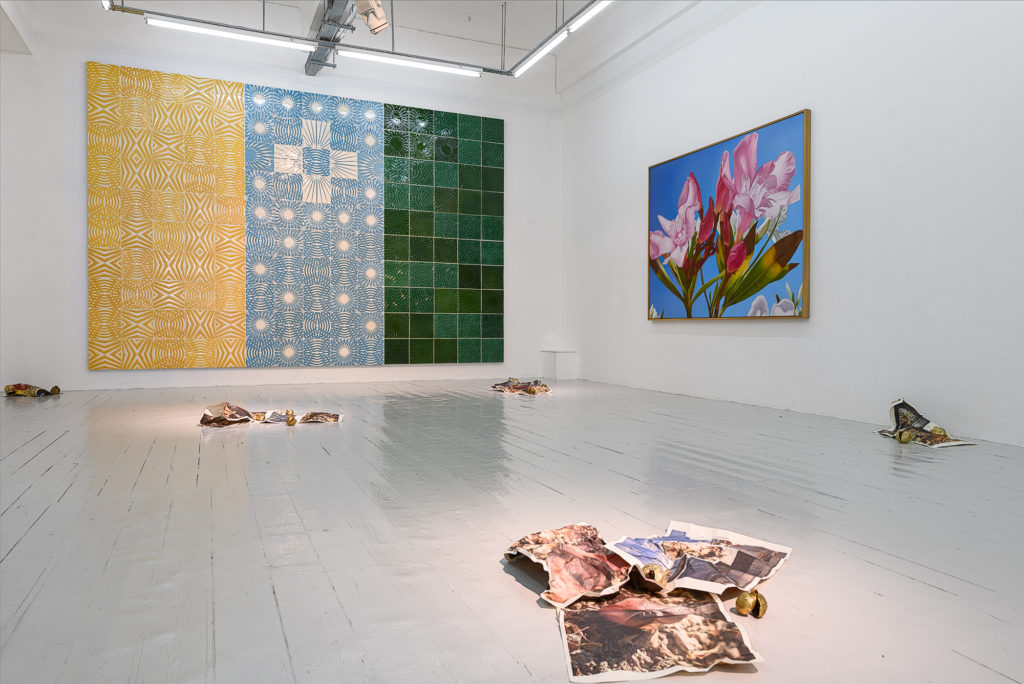
Installation view “Cyprus Realism” (2019). Courtesy of the artist and Pi Artworks.
The exhibition dwells on this reverence (or even nostalgia) for the natural and the sacred, which Hulusi complicates through the lens of contemporary technology.
In Mood Reel (2016), an eight-channel video installation, scenes from different films play simultaneously on the now outdated cathode-ray tube televisions that once filled homes around the world. The films date from an earlier era as well: Elizabeth Taylor appears in various (and sometimes orientalizing) scenes simultaneously with shots from anti-colonist Third Cinema films of the 1960s and ’70s, creating disruptive but seductive dissonances.
The installation engages memory, encouraging free association between the images, and yet it is a highly constructed experience, as one becomes aware that this kind of editing is only possible with digital technologies, and could not be done with the 8mm films to which the work seemingly pays homage.
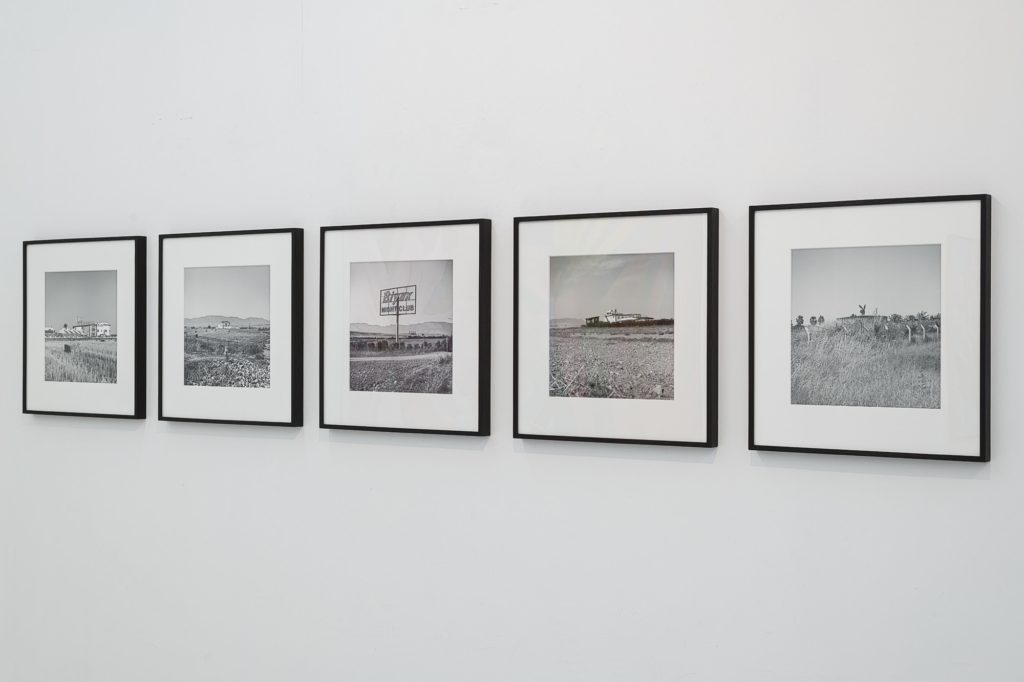
Installation view “Cyprus Realism” (2019). Courtesy of the artist and Pi Artworks.
A similar cognitive disruption occurs with the installation Ambient (5). A tile-covered wall, divided into three bands of yellow, blue, and green, seems to be covered in traditional Islamic abstractions.
But in fact, these patterns were generated using architectural algorithms and post-production design software. These titles, rather than underscoring a sacred whole, instead reflect the Cartesian coordinate system born of the Rationalist ideas of René Descartes. Having emerged from his concepts, these mapping systems have since become nearly sacred to Western logic—and they are implicit in military campaigns and colonial expansion.
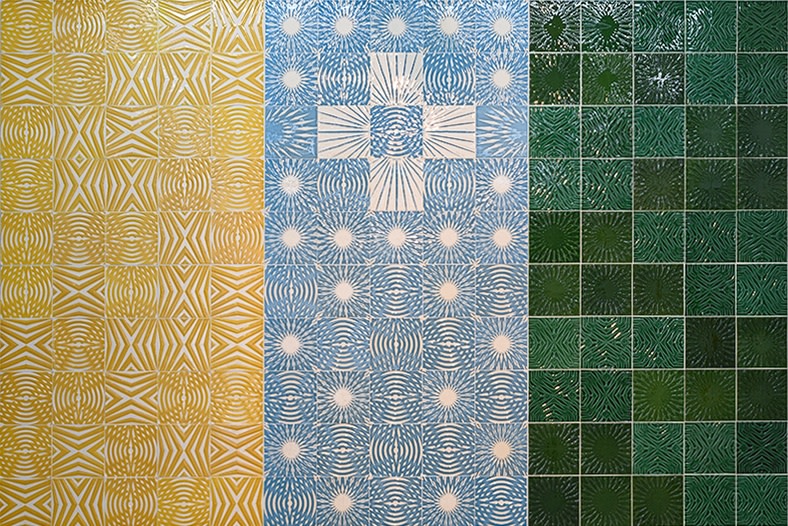
Mustafa Hulusi, Ambient (5) (2013-2019). Courtesy of the artist and Pi Artworks.
And yet, though rooted in a kind of disruption and breakdown, the mood of the exhibition is surprisingly exuberant. In the installation Cyprus Pomegranate, crumpled newspaper emblazoned with images of rotting fruit are accompanied by bronze casts of pomegranates that have burst from over-ripening.
The pomegranate itself has many connotations. In mythology, Persephone binds herself to Hades, king of the underworld, by eating its seeds. Others believe it to be the “forbidden fruit” in the Garden of Eden as described in the Book of Genesis.
Here, the fruit has passed the point of possible consumption, but for Hulusi, this is good news. “The expired fruit gives us fresh hope,” the artist says. “We can take that which is rotten, decayed and discarded, and transform it into the sacred.”

Mustafa Hulusi, Cyprus Pomegranate (2019). Courtesy of the artist and Pi Artworks.
“Mustafa Hulusi: Cyprus Realism” is on view at Pi Artworks through May 11, 2019.